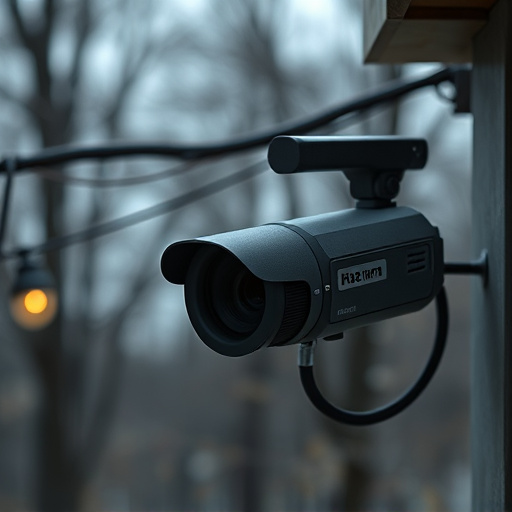Strategically mask wireless night vision security cameras indoors using discreet items like boxes and ceiling fans to blend in while ensuring optimal coverage. Choose camera models with adjustable angles or pan-tilt functions for fine-tuned views. Position cameras at entry points, high-risk areas, and corners near windows. Hide cameras in plain sight through objects like light switches or fake rock formations. Test performance with clear lighting, adjust settings, review footage, and experiment with masking techniques for optimal results.
Transform your home’s security with a discreet yet effective system using wireless night vision security cameras indoors. This comprehensive guide details a step-by-step process to create an unintrusive surveillance network. We explore selecting the right masking objects for optimal camera coverage, setting up wireless night vision cameras, and creatively placing them for unobtrusive monitoring. Learn how to test and optimize your masked security system for enhanced peace of mind.
- Selecting Masking Objects for Optimal Cam Coverage
- Setting Up Wireless Night Vision Cameras Indoors
- Creative Placement Techniques for Unobtrusive Monitoring
- Testing and Optimizing Your Masked Security System
Selecting Masking Objects for Optimal Cam Coverage
When selecting objects to mask in your household for optimal coverage with wireless night vision security cameras indoors, consider both their placement and function. Objects like furniture, shelves, and even houseplants can obstruct camera views, so choose masking items that are strategically placed yet discreet. For example, a small, decorative box or basket can obscure a corner without sacrificing aesthetic appeal. Similarly, positioning masks over cameras mounted on walls or ceilings, such as framed art or ceiling fans, can help maintain clear vision while preserving your home’s decor. Remember, the goal is to balance security with natural interior design, so choose masks that blend in seamlessly.
Opting for masks designed specifically for security cameras ensures compatibility and effectiveness. These masks come in various sizes and styles, allowing you to perfectly fit them over your chosen objects. Additionally, wireless night vision security cameras themselves can be a key factor; some models offer adjustable camera angles or pan-and-tilt capabilities, enabling you to fine-tune your coverage without having to mask as many areas. This flexibility ensures that you get the most comprehensive view of your indoor spaces while maintaining privacy in sensitive areas.
Setting Up Wireless Night Vision Cameras Indoors
Setting up wireless night vision cameras indoors is a straightforward process that allows you to monitor your home’s interior 24/7, even in complete darkness. Start by choosing cameras designed for indoor use and equipped with infrared (IR) LEDs for clear night-time footage. Ensure these cameras are compatible with your existing Wi-Fi network. Once powered on, these devices will automatically connect and pair, making installation a breeze.
Position the cameras strategically to cover all entry points and high-risk areas within your home. Mount them discreetly in corners or near windows for optimal viewing angles. Test their functionality by turning off the lights and checking the feed on your connected smartphone or tablet. With wireless night vision security cameras indoors, you’ll have peace of mind knowing that your home is protected around the clock, even when you’re away.
Creative Placement Techniques for Unobtrusive Monitoring
To achieve unobtrusive monitoring with wireless night vision security cameras indoors, creative placement techniques are key. Mounting cameras in plain sight can deter potential intruders, so consider hidden or disguised options instead. For example, integrating cameras into common household objects like light switches, power outlets, or even fake rock formations can provide covert surveillance without compromising aesthetics. These discrete placements allow for continuous observation while maintaining a natural environment.
Additionally, utilizing corner mounts or placing cameras slightly above eye level helps to capture comprehensive footage without drawing attention. With the right wireless night vision security camera models, you can leverage their advanced features—like motion detection and infrared technology—to ensure clear images in low-light conditions, enhancing their effectiveness as unassuming sentinels within your home’s interior.
Testing and Optimizing Your Masked Security System
Once you’ve successfully masked your security camera to discreetly blend into your household objects, it’s crucial to test and optimize your new system. Start by ensuring the wireless night vision security cameras indoors are capturing clear images with adequate lighting. Adjust the camera’s settings, including resolution and infrared intensity, for optimal visibility in low-light conditions.
Regularly review the footage to ensure the masked cameras accurately detect motion and capture any unusual activities. Consider testing different masking techniques on various objects to find the most effective approach that maintains security while preserving the aesthetic appeal of your home.
Transform your home security with our comprehensive guide on masking household objects using Wireless Night Vision Security Cameras Indoors. By strategically selecting and placing these cameras, you can achieve optimal coverage without compromising aesthetics. Our steps for creative placement and testing ensure a robust yet discreet monitoring system tailored to your living space. Implement these techniques to enhance your home’s safety and peace of mind.
